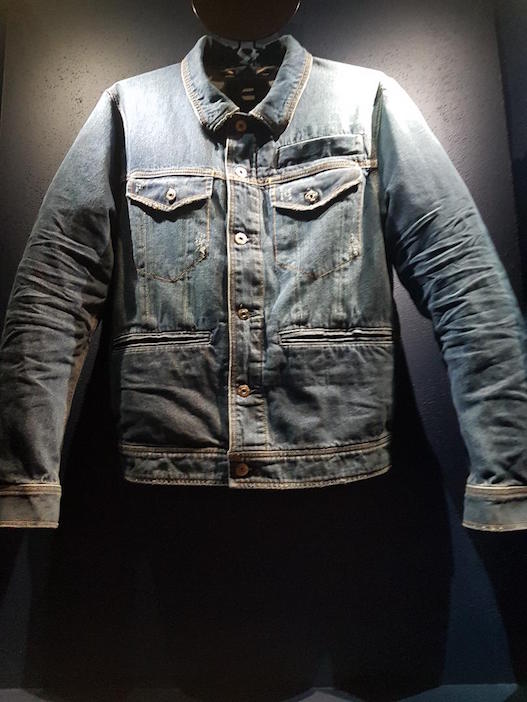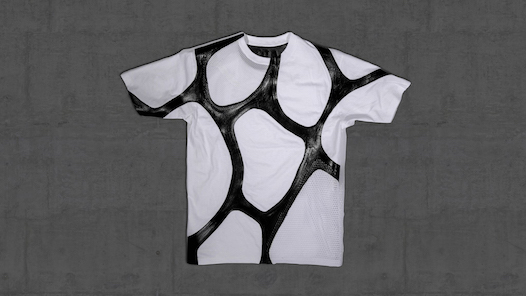Beazley Designs of the Year 2018
Design Museum, London
Tour date: Saturday 10 November 2018
The Design Museum’s Beazley Designs of the Year exhibition annually celebrates the best of design and its practitioners. Grouped under twelve “headlines”, this 11th edition of the exhibition highlights the immediacy of design and shows how designers are tackling new technologies, generating new visions, and responding to social trends and global events, sometimes with a sense of ambivalence, but always with optimism about our ability to shape the present and the future.
On this multisensory tour, we explored a range of projects from six categories, selected from Architecture, Digital, Fashion, Graphics, Product and Transport design. This tour concluded with a workshop activity that included discussions and a handling session.
Sustainability was the theme that ran through a majority of the exhibits selected for this tour, particularly the first three displays, and we felt it would be valuable to share some thoughts and findings from research for the tour. This blog focuses on those first three projects presented at the tour.
Sustainability and Materials: an Introduction.
There is a rampant global growth in the way our society is currently treading the road to the extinction of mankind, something that we all have a responsibility to fix. There are now more people on the earth living off it’s depleting resource and we all have to think about and plan for new and sustainable ways of living off the earth. The question is, what are we going to do about it? What changes and adaptations are we willing to implement and what measures are we going to put in place?
Here are a few projects from the Beazley Designs of the year exhibitions tackling the issue of environmental waste and pollution.
The Plastic-Free Supermarket Aisle

Image: The plastic-free supermarket aisle | Category: Graphics
Designed by A Plastic Planet and Made Thought for Ekoplaza
Image credit: Design Museum
Recyclable or biodegradable materials like glass, metal and cardboard are used to create sustainable materials for our daily use. This goes a long way to create a more sustainable environment, tackling serious issues like the deluge of plastic waste that is currently threatening our environment and the ecosystem.
Dutch supermarket chain Ekoplaza has opened the world’s first plastic-free shopping aisle, with a plan to expand the programme to all of its 74 stores by the end of the year. The aisle features more than 700 products packaged in recyclable glass, metal, cardboard and biodegradable containers, all clearly signposted by the “plastic-free” logo designed to be clear and simple.
In order for a product or material to be truly described as sustainable, it has to be environmentally, economically and socially sustainable. These aspects are known as the Three Pillars of Sustainability.
Discussion points:
Sustainable materials are derived from eco-friendly resources
Eco-friendly resources include sustainably grown fibre crops
Eco-friendly also refers to how these materials are made.
The Ecologically Responsible Denim Jacket

Image: The D-Staq RFTPi denim jacket | Category: Fashion
Designed by G-Star RAW
Denim brand G-Star RAW has developed the world’s first Cradle to Cradle certified GOLD G-Star denim fabric which is made out of 100% organic cotton. During production, the cleanest indigo dyeing technology was introduced, using 70% less chemicals, no salts and producing no salt by-product during the reduction and dyeing process.
The most sustainable and responsible washing techniques were developed to ensure that 98% of the water will be recycled and re-used, and the other 2% will be evaporated.
Discussion points:
This is made out of 100% organic cotton
It uses the most sustainable and responsible washing techniques
98% of the water will be recycled and re-used.
ZOA™, a Bio-Fabrication Project

Image: ZOA leather t-shirt grown from collagen
Designed by Modern Meadow
Image credit: Museum of Modern Art (MoMA), New York
Zoa™ is a new collection of products made of bio-fabricated leather, which replicates the texture and suppleness of natural leather without using any animal products. Instead, the material is grown from collagen, natural leather’s main component, but in this case, derived from yeast. As well as eliminating the slaughter of cows, and the environmental impact of raising them and tanning their hides – an often toxic process itself – Zoa’s bio-leather opens up new design possibilities, including shapes, densities and other properties not previously possible.
This solution is a whole system design through innovation and a bio-diversity approach. A small part of the innovation is creating designs using liquid leather that can be moulded into the desired designs, without the need for stitching. Liquid leather provides the ability to morph designs, to take any shape, and combine with other materials.
Discussion points:
Bio-fabrication unlocks the power of nature to offer new design possibilities
A pioneer of bio-fabrication, Modern Meadow believe that the multidisciplinary collaboration between design, biology and material science can lead to smarter ways to make evolved materials
Leather is unique for its strength and stretch, and its aesthetic appeal but the process of creating leather is still dependent on animal skins
Businesses involved in the production of leather have long complained about the problems with the supply chain, the fallibility of the material, waste in the process, and unpredictable weather can also lead to price volatility.
A lot of the waste is due to the irregular shape of animal hides, coupled with scars and insect bites, meaning up to 30 percent of animal skins regularly goes to waste.

Image: A close up of Modern Meadow’s bio-fabricated leather
Designed by Modern Meadow
Image credit: Courtesy
In the early days, Modern Meadow grew skin cells to create leather but the company has since refined its approach. They now use a fermentation process to brew collagen directly. Their scientists have bio-engineered a strain of yeast that, when fed sugar, produces collagen, which is then purified, assembled and tanned to create a material that is biologically and perceptibly almost indistinguishable from animal leather.
Today, the global leather goods business is worth over $100 billion a year and produces everything from car seats to luxury handbags but the process of creating leather is still dependent on animal skins. Leather is unique for its strength and stretch, not to mention its aesthetic appeal and links to powerful cultural archetypes from cowboys and aviators to bikers and rockers. And yet raising and slaughtering the billions of animals whose skins feed the leather supply chain each year is inefficient, cruel and comes with huge environmental impact.
The irregular shape of animal hides, coupled with scars and insect bites, can mean 20 to 30 percent of animal skins regularly go to waste. Bio-fabrication meant dealing with reliable quality material in a reliable shape and size — and that is beneficial for business. Modern Meadow’s technology also allows customers to bring processes like dyeing and finishing into the formation of the material, unlocking additional efficiencies.
But while Modern Meadow plans to bring a finished good to market within two years and might one day compete with traditional leather suppliers on cost, its product — still in the research and development phase — is currently far more expensive to create than traditional leather.
“I don’t think we’ll ever look to compete with the commodity end of the spectrum. This is not about price competition,” explains Andras Forgacs, Modern Meadow co-founder and chief executive. “I think our materials in the near-term will be competitive at the luxury end of the market.”
For the rest of the multisensory tour, we discussed the Mobike, a minimalist bicycle for sharing; the Quicksee, a portable eye test kit designed by PlenOptika; and the new pound coin designed to be counterfeit-proof.
Images: The new Pound Coin, the Mobike bicycle, and the Quicksee kit.
The workshop session at the end of the tour was our opportunity to further discuss the tour and explore some handling objects from the museum’s handling collection.
OUR NEXT DESIGN MUSEUM TOUR
Exhibition title: HOME FUTURES
Date: SATURDAY 12 January 2019
Time: 11:00 – 12:30
What to expect:
Explore today’s home through the prism of yesterday’s imagination. Are we living in the way that pioneering architects and designers throughout the 20th century predicted, or has our idea of home proved resistant to real change?
The Design Museum
224 – 238 Kensington High Street
London W8 6AG
Contact the Design Museum on +44 (0)20 3862 5900 or the Bookings Office on +44 (0)20 3862 5937
Monday to Friday 10:00 to 17:00
CREDITS
Text for Zoa™ leather: © 2018 The Business of Fashion
Multisensory Tour Facilitator: Andrew Mashigo
Tour Programmer: Bernard Hay, Producer Adult Learning, Design Museum
Large Print Guide: MaMoMi
Copyright © The Design Museum 2018
#designmuseum #DOTY #tour #access #sustainability #materials




